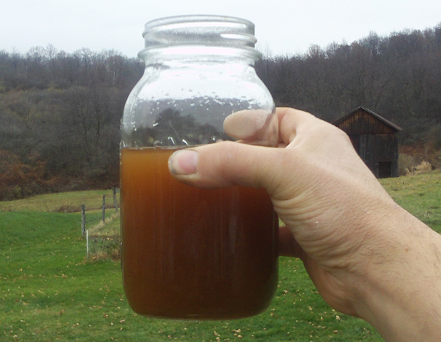Conservation in Delaware Basin Worth $8B Annually
July 7, 2013Josh Fox to President Obama: "Meet With Us"
July 9, 2013What New Jersey Needs To Know About Gas Drilling Along The Delaware River
Prepared by Damascus Citizens for Sustainability
DamascusCitizens.org – Concerned about the Delaware River Basin and Beyond
New Jersey’s drinking water is at risk: Over half to 2/3 of New Jersey’s population are dependent on water from the Delaware River Basin, including direct withdrawals from the Delaware River itself and recharge of the New Jersey Coastal Plain aquifer.
If the Delaware River is contaminated from gas drilling or drilling related activities then New Jersey populations dependent on water either directly withdrawn from the River or sourced from aquifers recharged from the River will be impacted. The recharge area is connected to the Delaware River and its flood plain, as the geography indicates, then if there is direct discharge of chemicals, fracking liquid, produced fluids from the wells or other contaminated waste into surface waters flowing into the Delaware there would be a strong likelihood that some of this material would percolate into the aquifers and begin to bioaccumulate. Additionally the extensive water withdrawals and forest clearing related to the drilling will impact the River’s water quantity and quality.
Summary of Potential Population Impact
Via two pathways – direct withdrawal and recharge of aquifers – water from the Delaware river Basin feeds New Jersey.
Direct water withdrawal is made from the Delaware River of approx. 100 million gallons a day of the total 225 million gallons a day used by the New Jersey Water Supply Authority (NJWSA). The NJWSA system would not function without this water from the Delaware River.
NJWSA serves approx. 2 million people (according to their website) or 1.5 million residents in central New Jersey as of 2005 (Raritan_Basin_Riverware_Model.pdf).
Direct withdrawals also serve Camden 50,000 people, Trenton 205,00 people and there are other localities that do not give the amount of the direct withdrawal only say that they do make direct withdrawals in addition to municipal wells into aquifers being proportionally recharged by the Delaware River – these population numbers amount to another 678,000 people.
So the total for direct withdrawals is 933,000 people. SEE references DRBC FOIAs on page 10 and 11.
The Coastal Plain Aquifers are being recharged from the Delaware River because of heavy pumping from the aquifers.
- Coastal Plain Aquifer counties – population 4,205,600 (est for 2009)
- 3.15 million people in New Jersey drink Delaware River water
- 4.2 million additional people drink groundwater that gets recharge from the Delaware River
- 7.35 million people in New Jersey is the total that would be affected if the river became polluted
- Total Population of New jersey 8.7 million (2009 estimate)
Gas Drilling Presents a Catastrophic Threat to the DELAWARE RIVER WATERSHED – the source of over half of New Jersey’s drinking water.
If gas drilling is permitted within the Delaware River Watershed area, the results will be catastrophic. In the Delaware River Basin alone, hundreds of billions of gallons of fresh water will be usurped and mixed with highly toxic chemicals in order to extract the gas from the shale rock. Then the waste water containing very high levels of salts, toxic metals, fracking chemicals and hydrocarbons – all of which have health effects – may be released into the Delaware River or its tributaries. Spills both legal and illegal happen regularly.
The Marcellus
Thirty-six percent of the Delaware River Watershed (4,928 square miles) lies within the Marcellus Shale region. This shale rock, up to a mile and a half deep, is said to be rich with natural gas, trillions of cubic feet worth. The gas industry says that the Marcellus Shale, spanning 600 miles across parts of four states (NY, PA, WV & OH), will become the nation’s largest gas field.
Drilling in Delaware River Watershed
In both Pennsylvania and New York state extensive areas have been leased for drilling. Under current law, companies could end up putting a well every 40 acres in New York and Pennsylvania. This would result in over 30,000 wells within the Delaware River Watershed, in effect, transforming it into an industrial zone. The amounts of fresh water consumed and polluted could reach 400 billion gallons. (It takes between 3 and 5 million gallons of fresh water to fracture each horizontal well and they can be fractured multiple times.)
Second, under the 2005 Energy Policy Act, the gas industry gained exemptions to portions of the Clean Water Act, Safe Drinking Water Act (SDWA), Clean Air Act, Right-to-Know Act and Super-Fund Act. The “Halliburton Exemption” makes it possible for gas companies to keep secret the chemicals and other products used in fracking fluid and released as a result of the process.
The process of hydraulic fracturing is inherently polluting and contributes to global climate change. In the face of a global water shortage, it also has a devastating effect on the world’s remaining sources of potable water. As New York City Council Environmental Protection Committee Chair James F. Gennaro stated: “Gas drilling and exploration is an activity that cannot be allowed within any drinking water supply watershed, as it will inexorably lead to significant drinking water contamination.”



